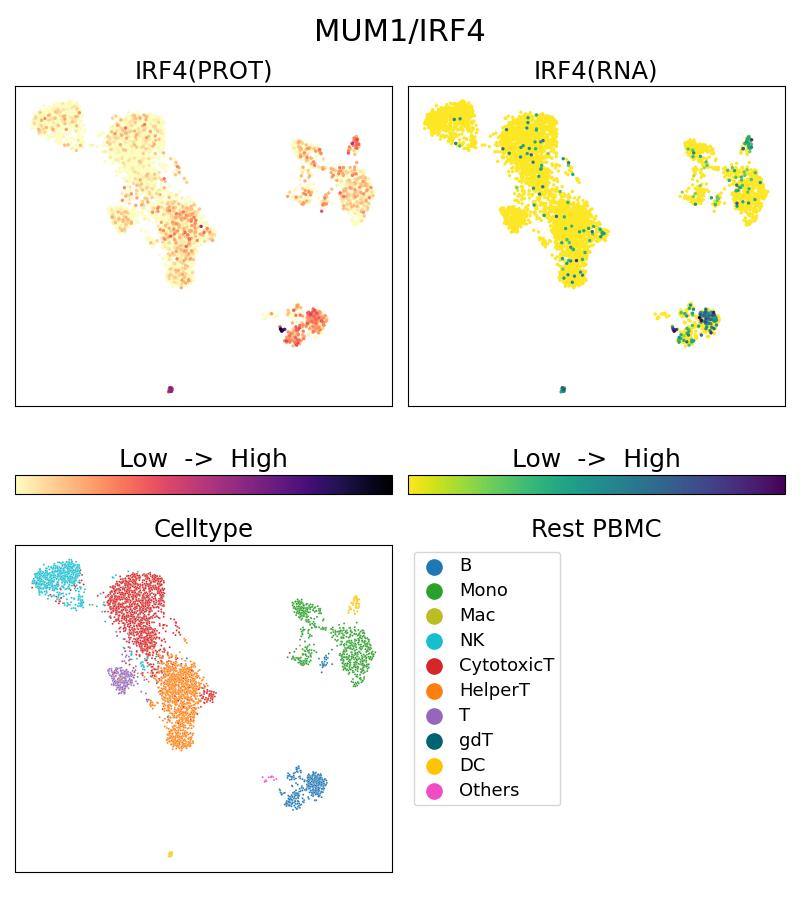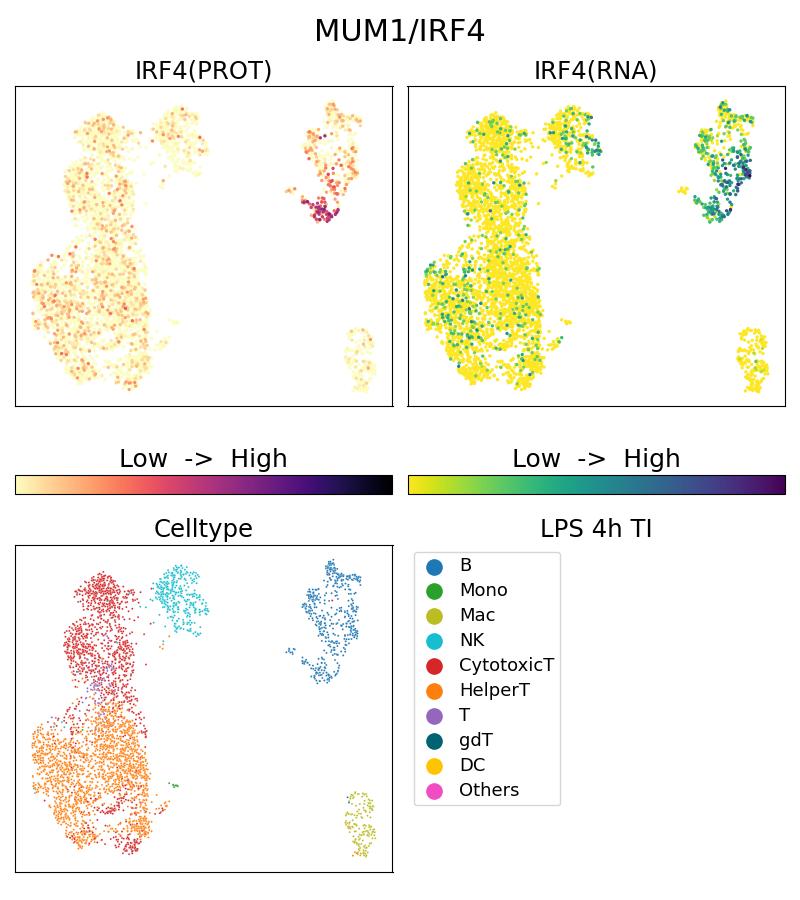验证数据展示
经过测试的应用
| Positive Single Cell (Intra) detected in | 10x Genomics Gene Expression Flex with Feature Barcodes and Multiplexing product. |
推荐稀释比
| 应用 | 推荐稀释比 |
|---|---|
| SINGLE CELL (INTRA) | <0.5ug/test |
| It is recommended that this reagent should be titrated in each testing system to obtain optimal results. | |
产品信息
G11247-2-5C targets MUM1/IRF4 in Single Cell (Intra) applications and shows reactivity with Human samples.
| 经测试应用 | Single Cell (Intra) Application Description |
| 经测试反应性 | Human |
| 免疫原 | MUM1/IRF4 fusion protein Ag1762 种属同源性预测 |
| 宿主/亚型 | Rabbit / IgG |
| 抗体类别 | Oligo Conjugate |
| 产品类型 | Polyclonal |
| 全称 | MultiPro® 5CFLX Anti-Human MUM1/IRF4 (Polyclonal) |
| 别名 | IRF 4, IRF4, LSIRF, Multiple myeloma oncogene 1, MUM1, MUM1/IRF4, NF EM5 |
| 计算分子量 | 52 kDa |
| GenBank蛋白编号 | BC015752 |
| 基因名称 | IRF4 |
| Gene ID (NCBI) | 3662 |
| ENSEMBL Gene ID | ENSG00000137265 |
| RRID | AB_3673882 |
| 偶联类型 | 5CFLX |
| 完整寡核苷酸序列 | CGGAGATGTGTATAAGAGACAGAGTGCTTCTAGCCGACCCATATAAGAAA |
| 条形码序列 | AGTGCTTCTAGCCGA |
| 形式 | Liquid |
| UNIPROT ID | Q15306 |
| 储存缓冲液 | PBS with 1mM EDTA and 0.09% sodium azide , pH 7.3 |
| 储存条件 | 2-8°C Stable for one year after shipment. |
背景介绍
IRF4 is a member of the IRF family of transcription factors, expressed in most cell types of the immune system. IRF4 is a transcription factor essential for the development of T helper-2 (Th2) cells, IL17-producing Th17 cells, and IL9-producing Th9 cells, as well as dendritic cell (DC). It binds to and activates the ISRE of the MHC class I promoter, and may have a role in ISRE-targeted signal transduction mechanisms specific to lymphoid cells.
Protocols
| Our current MultiPro staining protocol for the cocktail | Download protocol |
| 10x Genomics CG000149_Demonstrated Protocol CellSurface Protein Labeling_Rev D.pdf | Download protocol |

